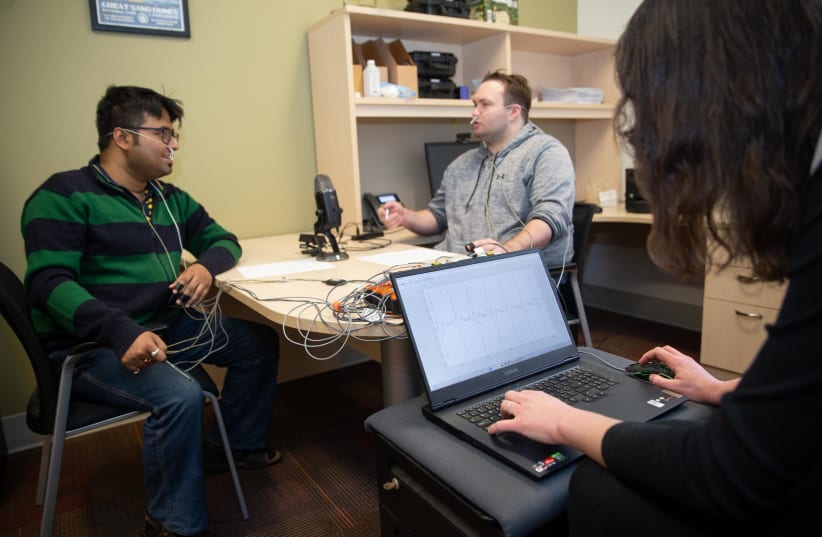The use of computer apps with questionnaires about personal preferences to find a suitable love interest is extremely widespread around the world. But could an app tell if a first date is not suitable based on physiological responses alone without writing a word?
Engineers at the University of Cincinnati (UC) say such a technology might not be far off. They trained a computer using data from wearable technology that measures respiration, heart rates and perspiration to identify the type of conversation two people were having based on their physiological responses alone.
Researchers studied a phenomenon in which people’s heart rates, breathing and other autonomic nervous system responses become synchronized when they talk or collaborate. Known as physiological synchrony, this effect is stronger when two people engage deeply in a conversation or cooperate closely on a task.
How can you measure physiological synchrony in just a conversation?
“Physiological synchrony shows up even when people are talking over Zoom,” said the study co-author, electrical engineering Prof. Vesna Novak, at UC’s College of Engineering and Applied Science.
In experiments with human participants, the computer was able to differentiate four different conversation scenarios with as much as 75% accuracy. The study is one of the first of its kind to train artificial intelligence how to recognize aspects of a conversation based on the participants’ physiology alone. The study was published in the journal IEEE Transactions on Affective Computing under the title “Automated Classification of Dyadic Conversation Scenarios using Autonomic Nervous System Responses.”
“The computer could tell if you’re a bore. A modified version of our system could measure the level of interest a person is taking in the conversation, how compatible the two of you are and how engaged the other person is in the conversation.”
Iman Chatterjee
Lead author and UC doctoral student Iman Chatterjee said a computer could give you honest feedback about your date or yourself. “The computer could tell if you’re a bore,” Chatterjee said. “A modified version of our system could measure the level of interest a person is taking in the conversation, how compatible the two of you are and how engaged the other person is in the conversation.”
Chatterjee said physiological synchrony is likely an evolutionary adaptation. Humans evolved to share and collaborate with each other, which manifests even at a subconscious level, he said. “It is certainly no coincidence. We notice physiological synchrony only when we measure it, but it probably creates a better level of coordination.”
Studies have shown that physiological synchrony can predict how well two people will work together to accomplish a task. The degree of synchrony also correlates with how much empathy a patient perceives in a therapist or the level of engagement students feel with their teachers.
“You could probably use our system to determine which people in an organization work better together in a group and which are naturally antagonistic,” Chatterjee said.
Novak concluded that “this aspect of affective computing holds huge potential for providing real-time feedback for educators, therapists or even autistic people. There are many potential applications in this space. We’ve seen it pitched to look for implicit bias. You might not even be aware of these biases.”

